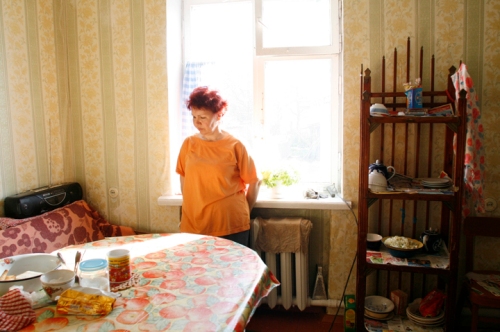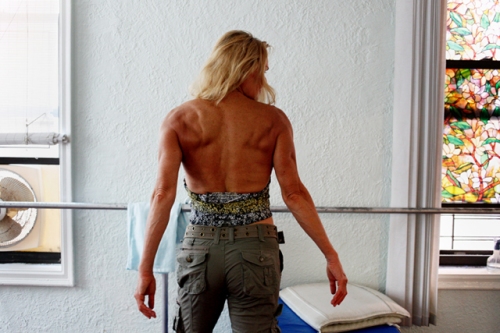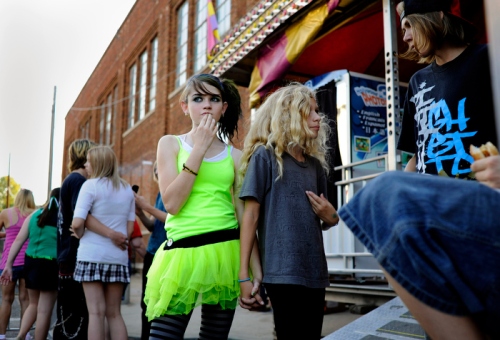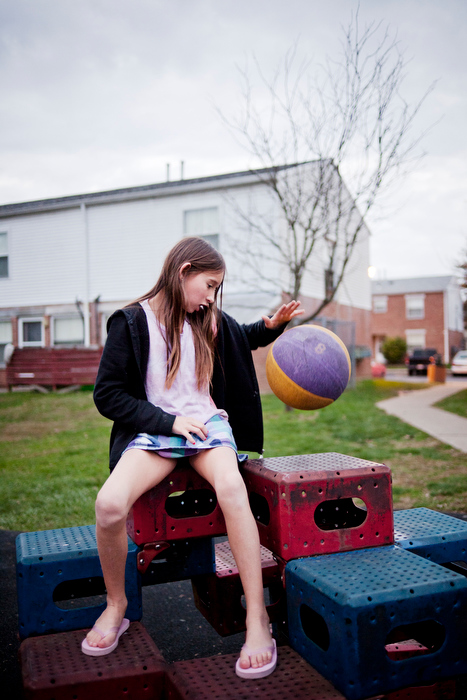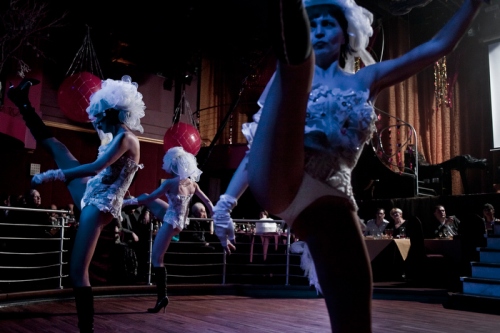It’s About Women
by abigailsmithson
I was lucky enough to get to know Emine Ziyatdinova while she was living in New York City. Although she has photographed many subjects including her own backyard in Crimea, young beauty queens in the Midwest, and the neighborhood of Brighton Beach in Brooklyn, I found a common subject among much of her work that I wanted to highlight: her photos of women, ranging in age, are continually striking. She communicates strength, fragility, force, and a quiet sense of compassion all in the same frame, as she reaches for a better understanding. The frank honesty and beautifully candid approach is what drew me into her work. She is a real person, taking pictures of reality, without any distance or judgment apparent between her and the women and girls. I spoke to her many times over beers, tea and grilled cheese sandwiches. After studying her work closely, I am excited to assemble photos of hers that were previously seen in separate bodies of work.
© Emine Ziyatdinova
© Emine Ziyatdinova
© Emine Ziyatdinova
© Emine Ziyatdinova
AS: What is it that draws you to often focus on women in your photography?
EZ: You project how you see the world on your photographs. Woman are beautiful. I can relate to the experience of being a woman. I feel safer with them. I am attracted to women and femininity. When i was in Ohio it was much easier to photograph women. When I moved to New York and did the project in Brighton Beach, it was much more difficult to photograph women. I feel that it’s the problem of shooting in a city vs. a rural area and teenagers vs. older women as well. Teenagers are usually very open and want to be photographed or do not care.
© Emine Ziyatdinova
Older women are more aware of the camera. In New York City, people seem suspicious, not trusting and busy. But overall, I think sometimes too much masculine energy makes me feel uncomfortable. Also, somehow I found myself inspired much more by regular women than men. Not only women who achieved something the in eyes of society, but also women who have a story that just captivates me.
© Emine Ziyatdinova
© Emine Ziyatdinova
© Emine Ziyatdinova
Women have more of an influence on me. My grandmother is amazing to me. She is an independent woman. She married late for her generation (at age 28) and then left her husband when she was pregnant. She is a very smart woman and was director of a school.
AS: Your portraits of women and girls show both a strength and a delicate fragility. Are these characteristics that you see in women?
© Emine Ziyatdinova
EZ: When I was photographing the teenage girls, I was always keeping in mind the social environment they live in and how these social structures define their life. I truly believe most people can’t get over this (the social structure they are born into). In Southeast Ohio, there are many social issues. Poverty, drugs, education and health issues. How much choice do you really have to get out from that circle? Even if you want to. Some people do have strong personalities and can work out anything. I feel like it is a small perentage of people. The rest of the people need help or social support, from networks. For example, I was photographing one family in Ohio. They live in the woods and their closest neighbor is two miles away. The parents are divorced. The stepmother smokes Marlboros all day and the dad smokes weed on the couch. Not even mentioning what kind of food is being ate. Why would you study well if you are in that environment? And even if you do, how much choice do you have to get out of there? I don’t know. Some people believe that you do. I don’t. You do not learn those social practices of being successful. There is a way to talk and dress, hold conversations. It is not only about having discipline and work ethics. Those are important social practices. There are all these other small details, how you talk and how you look. This is a general thought I always have when I photograph, not only in Brighton or Ohio. It is one of the main things behind all of my photography. Thinking about social structures and environment and the choices people make. When you are an ethnic or racial minority or a woman your choices become more limited. When minorities overlap gender, it is even more difficult. I do believe that it is important to discuss these problems. People should be more socially responsible for other people’s problems. This is not a natural disaster or a bomb happening. These kinds of problems are more deeply integrated into society. These are problems of people living next to your door, or in America, the next neighborhood. When you start to talk about these things people look at you like you are a socialist or communist. There is no ideal society but sometimes you just need to deal with these problems. This Ohio thing was freaking me out. These woman, it is easier for them to live on welfare and have kids, but these welfare problems don’t solve anything. It is completely a short term fix, instead of trying to solve it as a long term issue. But long term needs more financing.
© Emine Ziyatdinova
AS: Does being comfortable with your subjects allow for better pictures?
EZ: I believe that being comfortable with people you photograph is the key to good pictures, at least for me. I believe people can feel it if you look down on them or are afraid of them. So if there is no stress about these issues people look more natural and behave more naturally.
EZ: It’s clear ethic in photojournalism that you can’t move things out of frame when composing the picture. The scene is how is how it is. I believe that a lot of photographers who work on the edge of art and documentary photography don’t feel the same about strict photojournalism ethics. How much of the photographers vision can be projected into portraiture? How much can you ask the people to do? How much can you stage a portrait? In an environmental portrait, I strongly believe that it’s a rule in America to not change the scene.
© Emine Ziyatdinova
When the same photographers go international they might forget about that rule. I am more strict about it now, especially after school. I believe it is a candid situation. It is different when your project comes from scratch versus when your project comes from following someone. There is a gray area. There are a lot of projects, documentary photography projects based in a concept, that win contests. If it is conceptual it means that you apply your vision as a photographer to editing and when you take pictures. If your project doesn’t have a concept, it becomes news photography. Nothing should be moved around the picture in news photography. Gray areas exist within portraiture.
© Emine Ziyatdinova
© Emine Ziyatdinova
© Emine Ziyatdinova
To see more of Emine’s work click here.
To read her feature on The New York Times Lens blog , click here.



